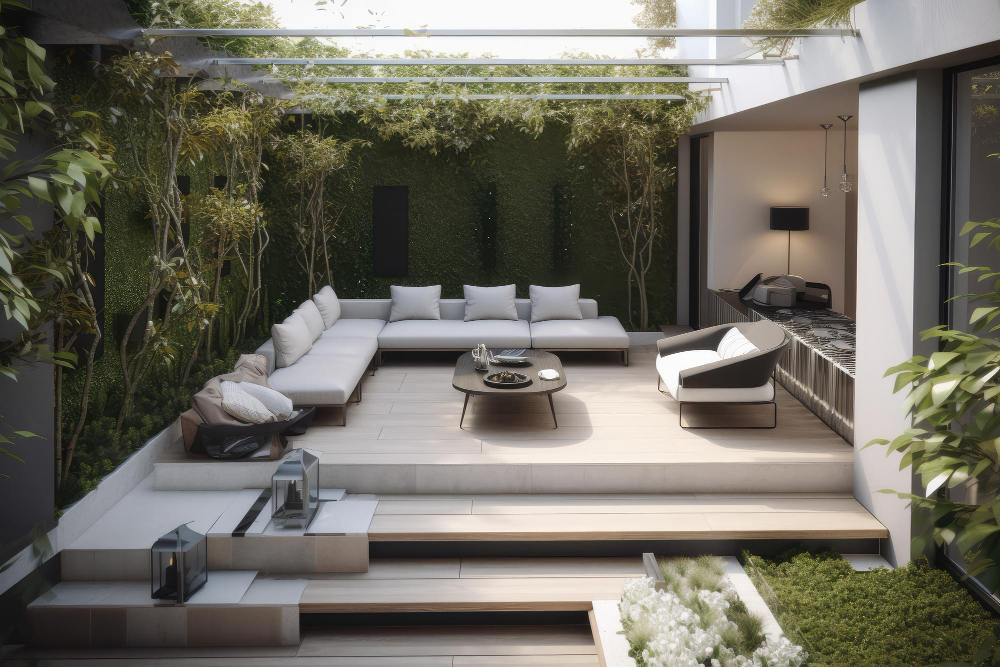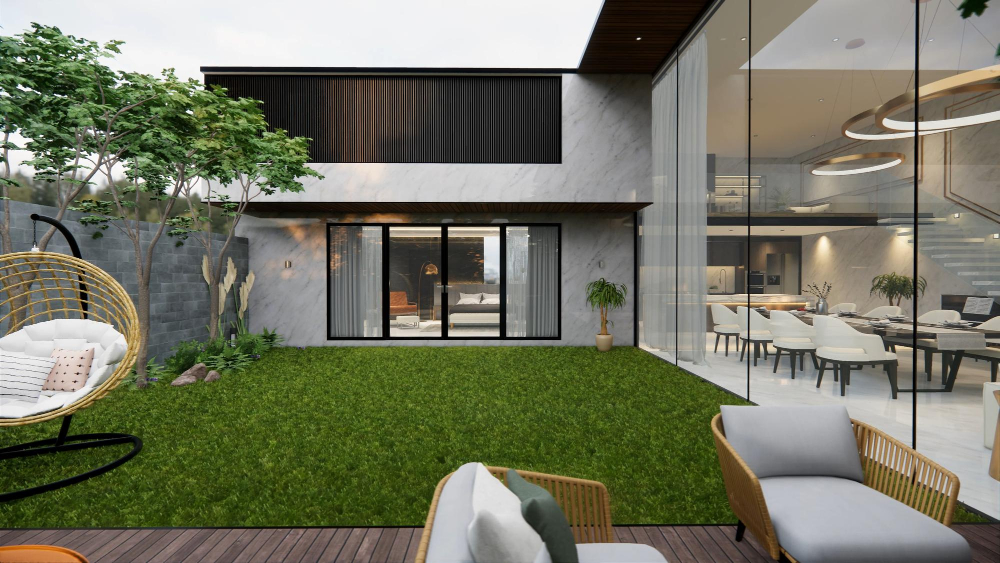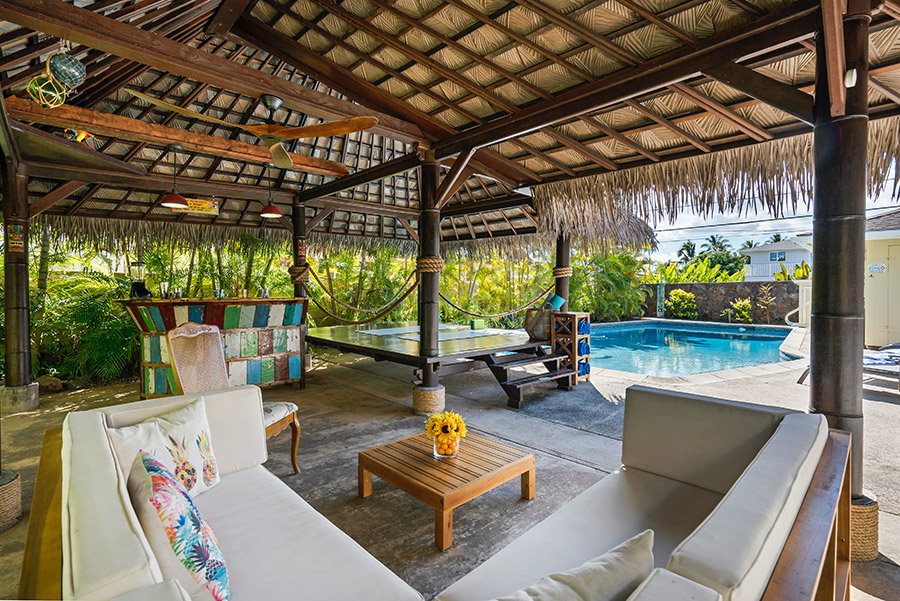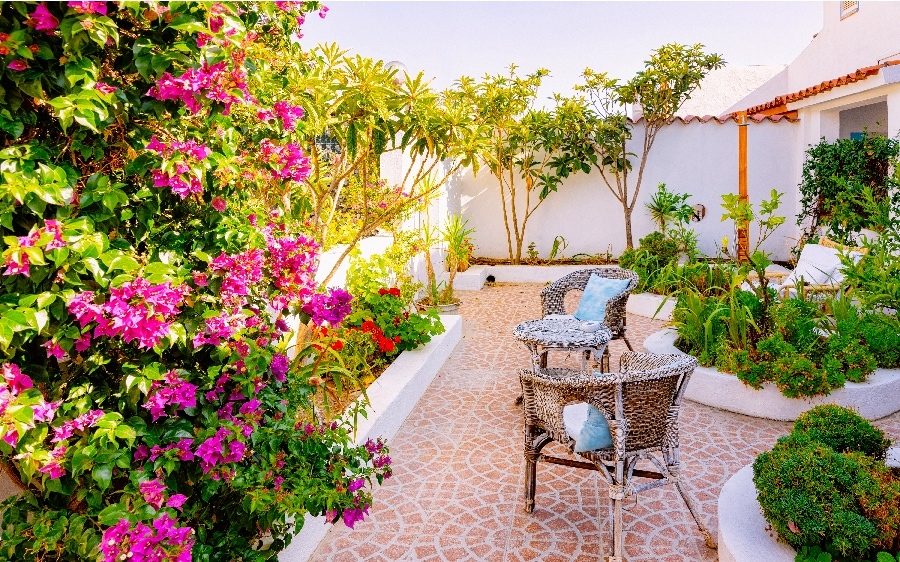Last updated on
Follow this guide to create a wonderful outdoor pace in your backyard. Read on!
Welcome to our guide on how to design a functional and aesthetically pleasing outdoor space! Whether you have a sprawling backyard or a cozy balcony, creating an inviting outdoor area can greatly enhance your living experience.
But where do you start? In this blog post, we’ll take you through the essential steps of designing an outdoor space that not only serves its purpose but also delights your senses.
From defining your purpose to incorporating greenery and adding decorative elements, let’s dive right in and transform your outdoor oasis into a haven of relaxation and beauty!
What's Inside
Define Your Purpose

First and foremost, consider how you want to use your outdoor space. Do you envision it as a cozy spot for morning coffee and reading? Or perhaps an entertaining area for hosting friends and family?
Understanding the primary function of your space will guide every design decision moving forward. Next, think about the overall ambiance you want to create. Are you drawn to a serene retreat surrounded by nature?
Or do you prefer a vibrant and energetic atmosphere filled with color and activity? Determining the mood will help shape everything from color schemes to furniture choices.
According to this outdoor electric power equipment provider located in Texas, when defining your purpose, you would have to think about the tools you will need to make the space more comfortable. When deciding on the provider you choose, make sure you research your options.
Finally, make sure you consider the size of your outdoor area as well. If space is limited, focus on maximizing functionality without overcrowding. Opt for multipurpose furniture or clever storage solutions to make the most out of every inch.
Consider the Layout

Think about the size and shape of your space. Consider any existing structures or natural features that may impact the layout, such as trees or fences. This will help you determine where to place different elements, like seating areas or dining spaces.
Next, think about traffic flow. Do you have a specific path in mind when you envision people walking through the space? Avoid creating narrow pathways that could feel cramped or obstructed. Instead, aim for open and inviting areas that encourage easy movement.
Another crucial aspect of the layout is zoning. Divide your outdoor area into distinct zones based on their intended use – cooking and dining zone, lounging zone, play area for kids – this will ensure each part serves its purpose effectively.
Additionally, don’t forget to consider views and privacy when deciding on the placement of key features. Position seating areas towards beautiful vistas while ensuring adequate screening from neighboring properties if needed.
Choose Appropriate Furniture

Consider the size of your outdoor area. If you have a small patio or balcony, opt for compact and multi-functional furniture pieces that can easily be moved around or folded when not in use. On the other hand, if you have a spacious backyard or deck, larger sectional sofas or dining sets may be more suitable.
Think about the weather conditions in your area. If you live in a region with harsh winters or frequent rainfall, it’s important to choose furniture made from durable materials such as teak or aluminum that can withstand these elements without deteriorating.
Consider the maintenance of the furniture, as well. Look for pieces that are easy to clean and require minimal upkeep so that you can spend more time enjoying your outdoor space rather than constantly maintaining it.
Don’t forget about comfort! Opt for cushions and pillows made from weather-resistant fabrics that will provide both support and coziness while lounging outdoors.
Incorporate Greenery

Plants not only add a touch of nature, but they also bring life and vitality to any area. Whether you have a large backyard or a small balcony, there are endless possibilities for adding greenery.
First, consider the amount of sunlight your outdoor space receives. This will help determine which plants are suitable for your specific environment. If you have limited direct sunlight, opt for shade-loving plants such as ferns or hostas. On the other hand, if you have ample sunshine, vibrant flowers like roses or sunflowers can thrive.
Next, think about the types of planters or containers that will complement your overall design aesthetic. Whether it’s rustic terracotta pots or sleek modern troughs, choose options that enhance the visual appeal of your space. Remember to mix and match different plant varieties to create texture and depth in your arrangements. Combine tall grasses with cascading vines for added interest and dimension.
Add Lighting and Decorative Elements

From string lights delicately draped across a patio to sleek solar-powered pathway lights leading the way through your garden, there are endless options to choose from. Not only do these lights provide necessary illumination once the sun sets, but they also add a touch of magic and whimsy.
In addition to lighting, don’t forget about decorative elements that can enhance the overall aesthetic appeal of your outdoor space. This could include items such as colorful throw pillows for seating areas or vibrant planters filled with blooming flowers. Consider adding unique pieces like wind chimes or outdoor art sculptures that reflect your personal style.
Moreover, think about incorporating natural elements into your design scheme. For example, strategically placing candles in hurricane lanterns throughout your space can create a cozy ambiance while also providing soft illumination. Additionally, utilizing fire pits or chimneys not only adds warmth on cooler evenings but also serves as an eye-catching focal point.
Define your outdoor space’s purpose, considering entertainment, dining, or relaxation. Plan the layout, incorporating traffic flow and focal points. Choose durable, comfortable furniture, and add greenery for beauty and tranquility.
Enhance the ambiance with lighting and decorative elements, like string lights and artwork. Furthermore, devote time to your outdoor space before coming to terms with anything. Research is crucial, but so is doing this right, so take your time.




